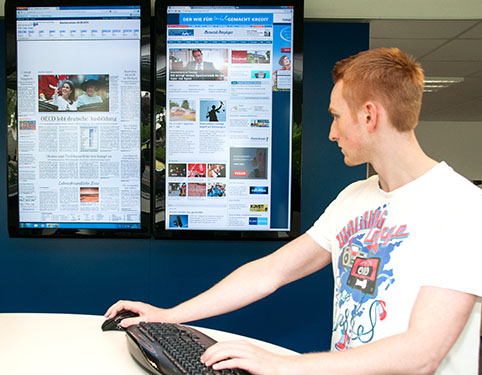The German Federal Institute for Vocational Education and Training (BIBB) has modernised the vocational education and training regulations for the profession "Media designer digital and print". Newly added were the areas of content creation, social media and 3D graphics. The new training regulations recently became effective.
The change of the internet from an information and knowledge platform to a communication and co-operation medium has an impact on the professions in the media and advertising industry. Facebook, Twitter & co. have evolved into lucrative marketing channels.
The modernisation of the training regulations for "Media designer digital and print" now has created a vocational education and training proposition, by which businesses can provide training also for these areas of activity.
The BIBB has developed the amendment and has created new optional qualifications for the areas of content creation, social media and 3D graphics development. The existing occupations of "Decoration template maker" and "Photo media laboratory assistant" were abolished and substituted by corresponding optional qualifications.
Many companies use social media for their marketing purposes. The new training regulations therefore newly institute the position "Platform for interactive communication" as a new optional qualification for social media content.
Goal: to work in a manner appropriate for the medium and target group
The taught content includes technical competences such as the creation of online company presences, the optimisation of search engines and applications for mobile devices. When these competences are combined with the optional qualification "Content creation", the apprentices attain the additional capability of, for example, conducting content-related research, of creating texts that are appropriate for the medium and the target group and of supervising online communities.
Alternatively, the social media elements may be combined also with the optional qualification "Communication planning and success control". Here, the apprentices gain the qualification to advise customers and to conceptualise communication measures for different media.
In this day and age, hardly any internet presence can do without graphics, animations and video elements. This is the area of activity of media designers in the new training field "3D graphics", where they learn to create three-dimensional still images and animations, for instance, the 360-degree visualisation of objects that is frequently encountered in many online shops.
